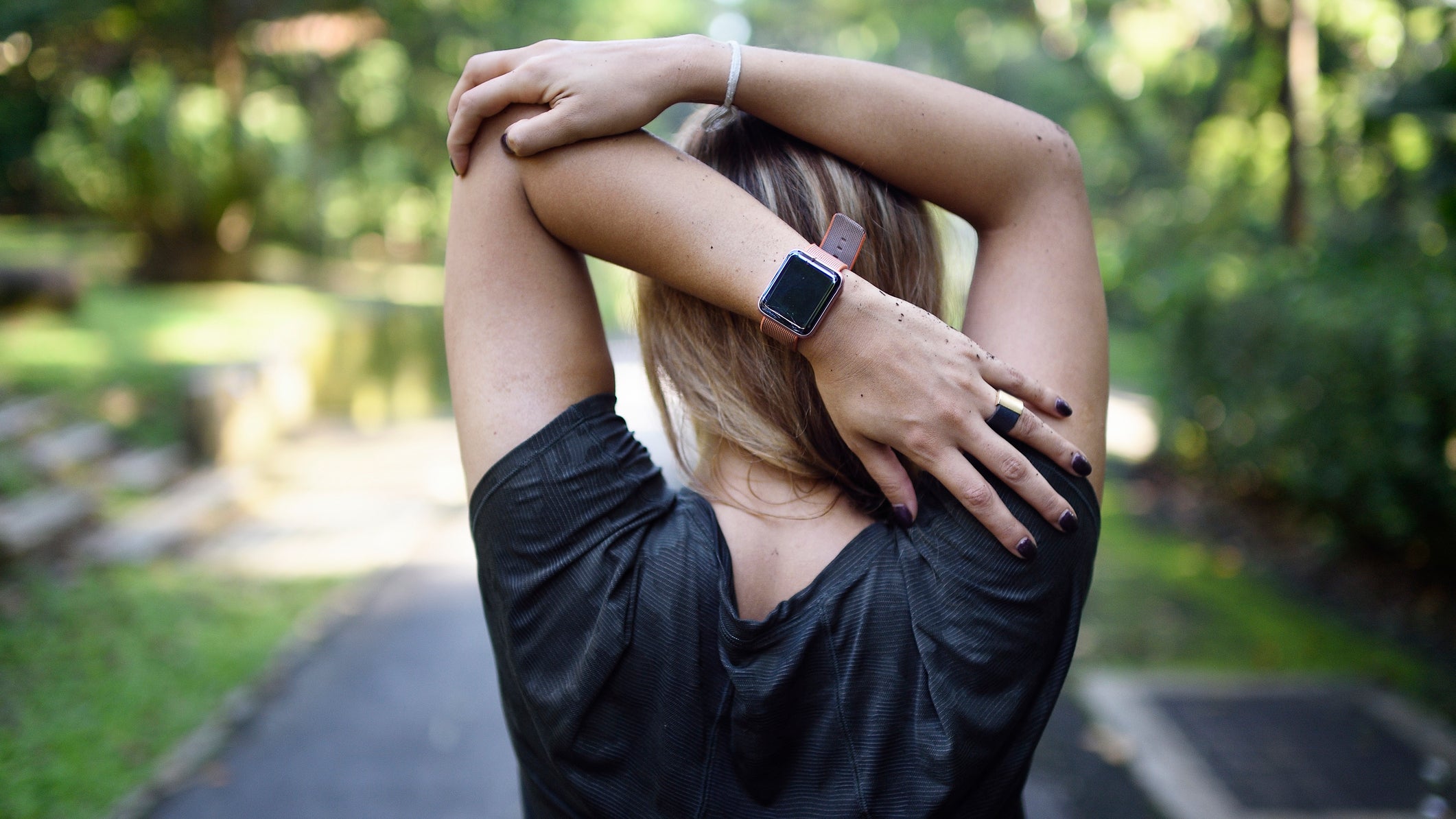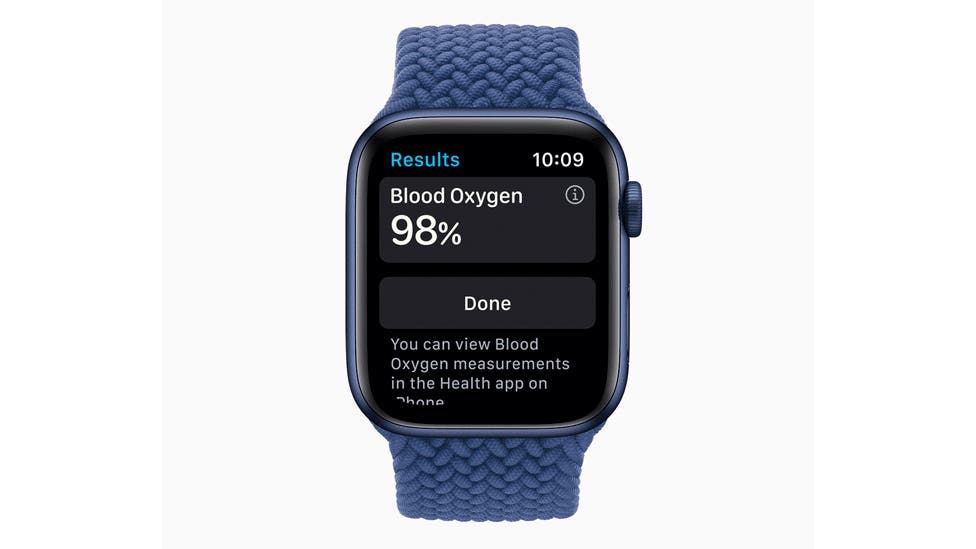Wrist Pulse Oximeters: How Can Triathletes Use This New Tech?

Wrist pulse oximeters are offering athletes a new way to look at their health. (Photo: Getty Images)
Over the past few months, pulse oximeters—a device that traditionally slips over your fingertip to measure oxygen levels in the blood—flew off the shelves as people looked for a way to monitor oxygen levels at home amidst COVID-19. But with a growing body of tech integrating pulse oximetry into regular fitness wearables and smart watches, they aren’t just for use in strictly medical settings anymore. Wrist pulse oximeters are gaining traction among athletes as companies fight to set themselves apart with their wearable tech.
Is it all just a gimmick? Could it help make you a better athlete? Why would measuring your blood oxygen in a day-to-day setting help with performance—and is this new tech even providing an accurate reading of your blood oxygen level anyway?
How Do Pulse Oximeters Work?
Pulse oximeters are a non-invasive way to measure your blood oxygen levels with the help of an emitter and sensors built into the device. “A pulse oximeter transmits two different frequencies of light through tissue, and when blood passes through the tissue between the transmitter and sensor, the device can estimate the saturation of hemoglobin with oxygen,” said Danny Martin, P.T., Ph.D., Professor Emeritus, University of Florida Department of Physical Therapy, who co-authored a paper on pulse oximetry and its accuracy for athletes in the mid-90s.
A normal oxygen saturation SpO2 reading ranges between 95-100 percent—however, Dr. Martin emphasized the number is an estimate. Pulse oximeters should be read with about +/-3 percent confidence, “so a reading of 95 percent could be as low as 92 percent or as high as 98 percent.”
The technology in today’s wearable tech does differ slightly from what you’ll find traditionally in pulse oximeters used in hospitals. Chris Myers, Ph.D., CSCS, CISSN, assistant professor in the Department of Health and Human Performance at Radford University and master coach at Peaks Coaching Group, explains that traditional pulse oximeters read oxygen saturation. Near-infrared spectroscopy (NIRS) technology—common receptors used in wearables—instead look at hemoglobin changes in real time. “When you have the regular chromosphere of hemoglobin, if it is oxygenated versus deoxygenated, it reflects the near infrared light at different wavelengths, which is how [you get your reading].”
Is Blood Oxygen Even Relevant for Triathletes?
These fancy watches are throwing lots metrics at us, but is any of it really useful? For the average wearer, things like heart rate variability (HRV) and blood oxygen won’t mean much. (Apple even admits blood oxygen app measurements aren’t intended for medical use and are geared instead toward general fitness purposes.) For triathletes, however, SpO2 measurements—in conjunction with heart rate monitors and power meters versus as a standalone metric—can be beneficial during both workouts and recovery. Myers admitted the fact that pulse oximetry should be a secondary training measurement is a limitation of the device, but it does give you a more direct way to look at your oxygen kinetics other than heart rate zones. Why does that matter?
“Oxygen is everything,” said Melissa Mantak, a former World Champion and USA Triathlon National Coach of the Year, who now coaches athletes of all levels at The Empowered Athlete. “The more efficiently we utilize oxygen—getting it to tissues and working muscles—the more efficiently we perform as athletes and in everyday life.”
Mantak said one of the best uses of SpO2 for triathletes is using baseline data (coupled with other metrics) to see if you are under recovered or experiencing potential onset of illness. “As you exercise, your SpO2 may drop, then rebound to a higher level in a recovered state. It can be used as a tool to regulate your breathing during exercise or at rest to ensure higher levels of oxygen saturation.”
It does have applications during exercise, too. For example, Myers said it gives you another way to know how long you can sustain the effort when time trialing before your muscles reach desaturation. This, however, requires more than a sensor on your wrist, unlike heart rate tracking.
The Problem with Wrist-Based Pulse Oximetry
When it comes to utilizing pulse oximetry during a workout, if the sensor isn’t placed over the muscle(s) doing the work, the measurement doesn’t mean much. Myers notes that not only are there differences symmetrically—muscles on the left and right side of the body will have different readings—but the thickness of the skin in given areas can also make a difference in how much the sensors can read. When running or cycling, Myers said you’ll often see it on the anterior portion of the leg and for swimming on deltoid or traps. “You want the sensor on an area related to the modality of work you are doing,” he said.
This doesn’t mean the wrist-based tech is completely useless. These readings can be helpful when training at higher altitudes or to provide a baseline measurement for the body to spot trends in recovery, illness, and adaptation. However, unlike heart rate, which can be taken from the wrist to get a total body measurement, if you want to use SpO2 as a data point during a specific workout, you’ll need a sensor over the muscles actively working.
Tech with Built-In Wrist Pulse Oximeters
The easiest way for triathletes to use pulse oximetry is with the Moxy Monitor, which can then be paired with Garmin ConnectIQ (some Garmin models have SpO2 built in, but again, these are wrist-based readings). If you’re fine with just having baseline wrist readings for overall fitness and health trends, then there are more options for you on the market.

Devices offering wrist pulse oximeter (SpO2) readings:
- Apple Watch Series 6
- Fitbit (Versa and Sense models)
- Garmin (Select fēnix, Venu, forerunner, and vívoactive models )
- Withings Scan Watch (coming soon)
- Moxy Monitor